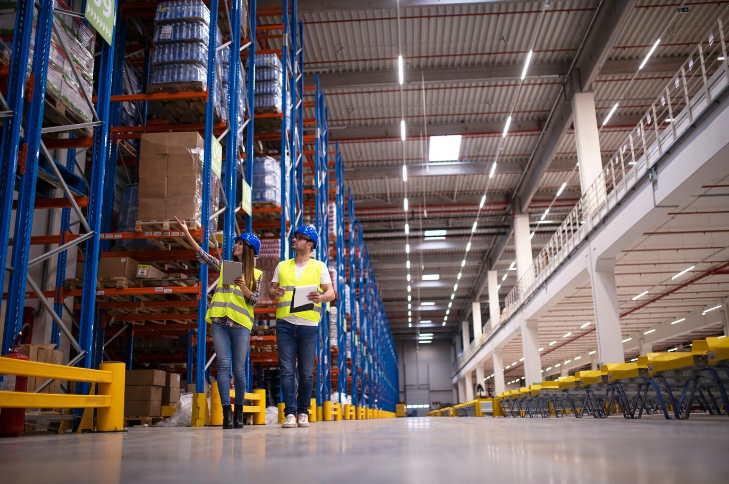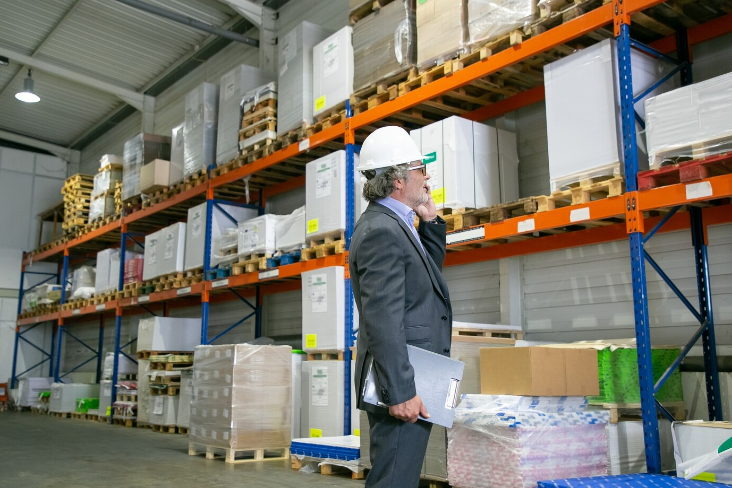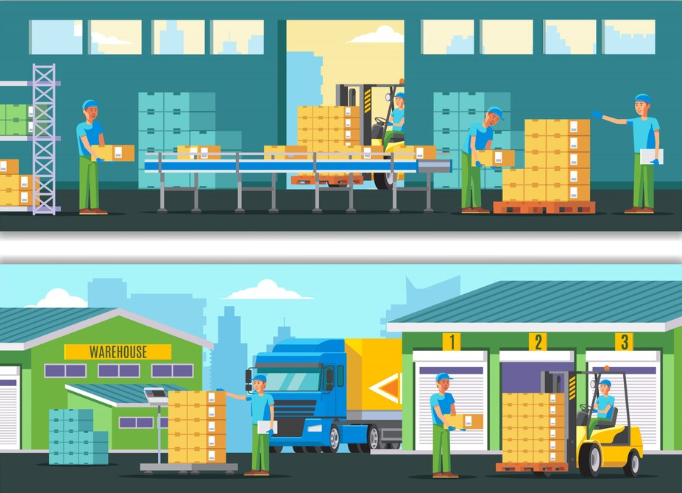Table of Contents
What Is Ambient Storage
Time: Jun 21,2024 Author: SFC Source: www.sendfromchina.com
Ambient storage, which keeps items at the natural temperature and humidity of the surrounding environment, is an ideal solution for many storage needs. This guide explores the key features, benefits, and best uses of ambient storage, particularly in warehousing. Learn about the types of products suitable for ambient storage and the important factors to consider when choosing this practical and cost-effective storage solution.
1. What Is Ambient Storage

AmbientAmbient storage is a storage method that maintains the natural temperature and humidity of the surrounding environment without additional climate control systems. Items stored in ambient storage remain at room temperature and typical environmental conditions.
As a common storage solution, ambient storage is ideal for products that do not require specific temperature settings to stay in good condition. Ambient storage is commonly utilized in residential, commercial, and industrial settings, offering a versatile and budget-friendly option for diverse storage needs.
2. Features of Ambient Storage
Ambient storage offers several key features that make it a practical choice for many storage requirements:Natural Temperature and Humidity Levels
The storage environment reflects the natural temperature and humidity of the surrounding area, making it suitable for goods that are not sensitive to environmental changes.
Cost-Effective Solution
Since ambient storage does not involve additional climate control, it is generally more affordable than other types of storage that require heating, cooling, or humidity regulation.
Wide Availability
Ambient storage is commonly found in residential homes, commercial warehouses, and industrial facilities. Its broad application makes it a practical solution for different storage needs.
Energy Efficiency
The lack of need for energy-intensive climate control systems makes ambient storage an eco-friendly and energy-efficient option.
3. What Types of Products Need Ambient Storage

Several types of products are well-suited for ambient storage. These items typically do not require specific temperature or humidity conditions to maintain their quality and usability:
Dry Goods: Items such as cereals, grains, pasta, flour, and other non-perishable food products that do not require refrigeration or freezing.
Canned and Packaged Foods: Canned vegetables, soups, sauces, and packaged snacks that remain stable at room temperature.
Beverages: Non-refrigerated beverages like bottled water, soda, juice, and alcoholic drinks that do not need to be kept cold.
Household Items: Cleaning supplies, paper products (such as paper towels and toilet paper), and non-perishable household goods.
Clothing and Textiles: Garments, fabrics, and other textile products that do not require specific climate conditions to maintain their quality.
Electronics: Many types of electronics and appliances that are not sensitive to temperature fluctuations, such as small kitchen appliances, tools, and certain consumer electronics.
Furniture: Items made of wood, metal, plastic, or other materials that do not warp or degrade in typical room temperatures and humidity levels.
Books and Media: Printed materials like books, magazines, and documents, as well as CDs, DVDs, and vinyl records that do not require specific environmental controls.
Non-perishable Personal Care Products: Items like shampoo, soap, toothpaste, and other toiletries that remain stable at room temperature.
Office Supplies: Stationery, paper, pens, and other office materials that do not need climate control.
Automotive Supplies: Car parts, tools, and accessories that are not sensitive to temperature changes.
4. Differences between Ambient Storage and Chilled Storage

Understanding the differences between ambient storage and chilled storage is crucial for choosing the right storage solution for your needs:
Temperature Control
Ambient Storage: Maintains the natural temperature of the surrounding environment without additional climate control.
Chilled Storage: Actively controls the temperature to keep it at a lower level, usually between 1°C to 8°C, to preserve temperature-sensitive items.
Humidity Regulation
Ambient Storage: Does not provide specific humidity control, reflecting the ambient humidity levels of the storage environment.
Chilled Storage: Often includes humidity control to prevent condensation and maintain the quality of sensitive products.
Suitable Products
Ambient Storage: Ideal for non-perishable goods, household items, and other products that do not require temperature regulation.
Chilled Storage: Necessary for perishable foods, certain pharmaceuticals, and other items that must be kept at lower temperatures to remain viable.
Cost
Ambient Storage: Generally more cost-effective due to the lack of climate control systems.
Chilled Storage: More expensive because of the energy and infrastructure required to maintain lower temperatures and control humidity.
5. Critical Considerations for Ambient Storage in Warehousing
When implementing ambient storage in a warehouse setting, several critical considerations must be addressed to ensure optimal storage conditions and operational efficiency:
Space Utilization
Maximizing the use of available space is essential in ambient storage warehouses. Proper warehouse layout and organization can significantly enhance storage capacity and efficiency. Utilize vertical space with shelving units and ensure clear pathways for easy access to stored items.
Inventory Management
Effective inventory management is crucial to avoid overstocking or understocking. Implementing inventory tracking systems can help monitor inventory levels and manage turnover, ensuring that items are easily accessible and accounted for.
Security Measures
The security of your stored items is crucial. Implement robust physical security measures such as surveillance cameras, security personnel, and secure access points. Prioritize cybersecurity for inventory management systems to safeguard against data breaches. By combining physical and digital security strategies, you can ensure the safety and integrity of your stored goods.
Environmental Monitoring
While ambient storage does not involve climate control, it is still important to monitor the environment for any extreme changes in temperature or humidity that could affect stored goods. Regular checks and maintenance can help maintain a stable environment.
Pest Control
Pest infestations can cause significant damage to stored items. Implementing a robust pest control strategy, including regular inspections and preventive measures, can protect goods from damage and contamination.
Safety Protocols
Maintaining safety protocols in the warehouse is essential to prevent accidents and ensure a safe working environment. This includes proper stacking of items, fire safety measures, and clear signage for emergency exits.
6. FAQs about Ambient Storage
1. What items are best suited for ambient storage?
Items that do not require specific temperature or humidity conditions are best suited for ambient storage. This includes non-perishable foods, household goods, office supplies, retail inventory, and tools.
2. How does ambient storage differ from climate-controlled storage?
Ambient storage maintains the natural temperature and humidity of the environment, while climate-controlled storage actively regulates temperature and humidity to specific levels suitable for sensitive items.
3. What are the cost benefits of ambient storage?
Ambient storage is generally more cost-effective than climate-controlled storage because it does not require additional energy or infrastructure for temperature and humidity regulation.
4. Can ambient storage be used for all types of products?
No, ambient storage is not suitable for all types of products. Items that are sensitive to temperature and humidity fluctuations, such as perishable foods and certain pharmaceuticals, require climate-controlled storage.
5. What are the key considerations when choosing an ambient storage facility?
Key considerations include location, security measures, space utilization, environmental monitoring, and pest control. Ensuring these factors are adequately addressed can help maintain optimal storage conditions.
 Post Views:617
Post Views:617
Copyright statement: The copyright of this article belongs to the original author. Please indicate the source for reprinting.
Previous Post
Seasonal Demand Fluctuation: Everything You Need to Know
Next Post
TAGS
Hot Research
Recent News
Get a Custom China Fulfillment Solution with FREE Storage for 30 Days
 Want to know about our services, fees or receive a custom quote?
Want to know about our services, fees or receive a custom quote?
 Please fill out the form on the right and we will get back to you within a business day.
Please fill out the form on the right and we will get back to you within a business day.
 The more information you provide, the better our initial response
will be.
The more information you provide, the better our initial response
will be.





 TAGS:
TAGS: